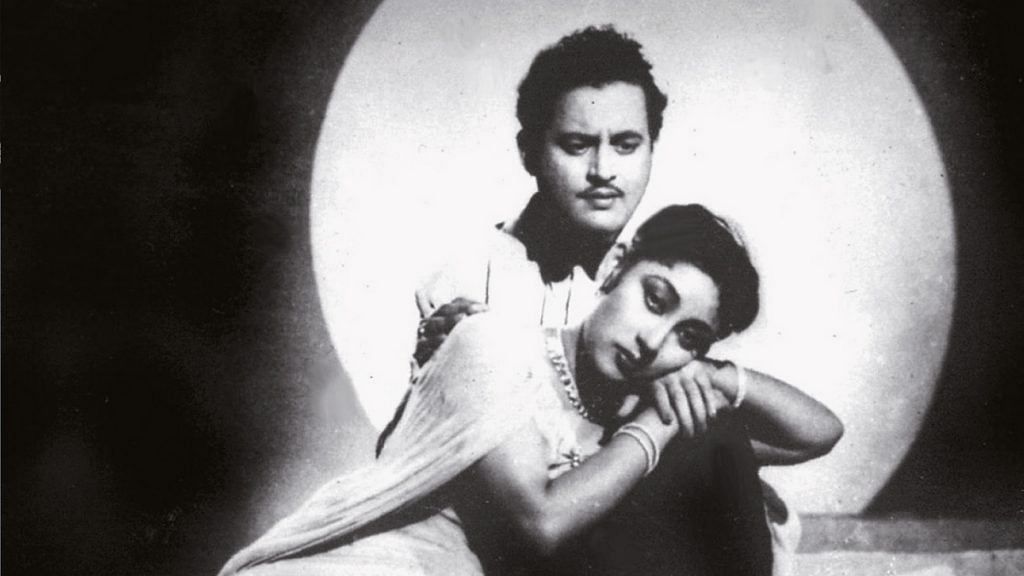It’s not often that Bollywood movies make you stop and wonder in awe. But when they do, it’s almost always because of the breath-taking script.
Pyaasa is the story of a poor, struggling poet, Vijay (Guru Dutt), who cannot seem to get a break. He is disowned by his family for not having a lucrative career, the love of his life abandons him for better prospects, and the few friends he has, are negligent. Everyone agrees that he is a gifted poet, but nobody is willing to publish an unknown vagabond.
He befriends a sex worker, Gulab (Waheeda Rehman), who reads his poetry and falls in love with him. A chance invitation to a college reunion brings him face-to-face with his former love, Meena (Mala Sinha), who is now married to a successful publisher. Her jealous husband employs Vijay to dig deeper into their former relationship. During a particularly depressive episode, Vijay is caught in a case of mistaken identity, which leads everyone to believe he is dead.
His poems are finally published then, and he finally gets the recognition he deserves. In the end, Vijay reveals himself to be still alive, and while Gulab and Meena rejoice, everyone else plots against him. Finally, Vijay renounces everything and decides that starting over is better than living a life where nothing and no one is genuine.
Guru Dutt’s magnum opus (second only to Kaagaz Ke Phool, may be) is the perfect example of parallel/art-house cinema marrying commercial Bollywood cinema.
Both as director and actor, Guru Dutt delivers magnificently. The shots and camera angles are unusual by Bollywood standards, as they actually work toward heightening the emotions of the scene.
Abrar Alvi’s script is like poetry, just like Sahir Ludhianvi’s lyrics. It’s dramatic but never over the top, and hits the spot even for those who don’t enjoy poetry. Sample these lines:
“Jab hum chale toh saaya bhi apna na saath de, jab tum chalo zameen chale aasman chale, jab hum ruke toh saath ruke sham-e-bekasi, jab tum ruko bahaar ruke, chandni ruke.”
The elements of Bollywood romance, drama, conflict, and revenge are all there in Pyaasa, mixed with the sensibilities and treatment of alternate cinema. The music, composed by S.D. Burman, is as much of a protagonist as Vijay, given how his poetry is his personality. Every song is classic — right from ‘Jaane Kya Tune Kahi’ to ‘Sar Jo Tera Chakraye’ and the haunting ‘Tang Aa Chuke Hain Kashm-e-Kashe Zindagi Se’, all sung by Mohammad Rafi.
A young Waheeda Rehman, just starting out in her career, and Mala Sinha are stunning, as complex characters. Gulab, as the sex worker, is used to the world being unfair to her and treating her like a commodity, but her capacity to love and find beauty in the darkest of days is endearing. Meena, the inspiration for Vijay’s poetry is selfish and materialistic, and a woman who looks out for herself, but somehow can’t move on from the past.
Also read: Remembering Guru Dutt, the genius filmmaker
Supporting roles of Johnny Walker as Abdul Sattar, Rehman as Mr Ghosh, and Mehmood as Vijay’s brother, add depth and character to the film, even if it is all about Vijay’s despair.
Pyaasa is timeless not just for its poetry and acting, but also because it dared to show the world like the cruel place it is. It is a depressing tale, no doubt. But it also teaches you that with a little bit of hope and faith, the possibility of a better future isn’t so hard to imagine.
